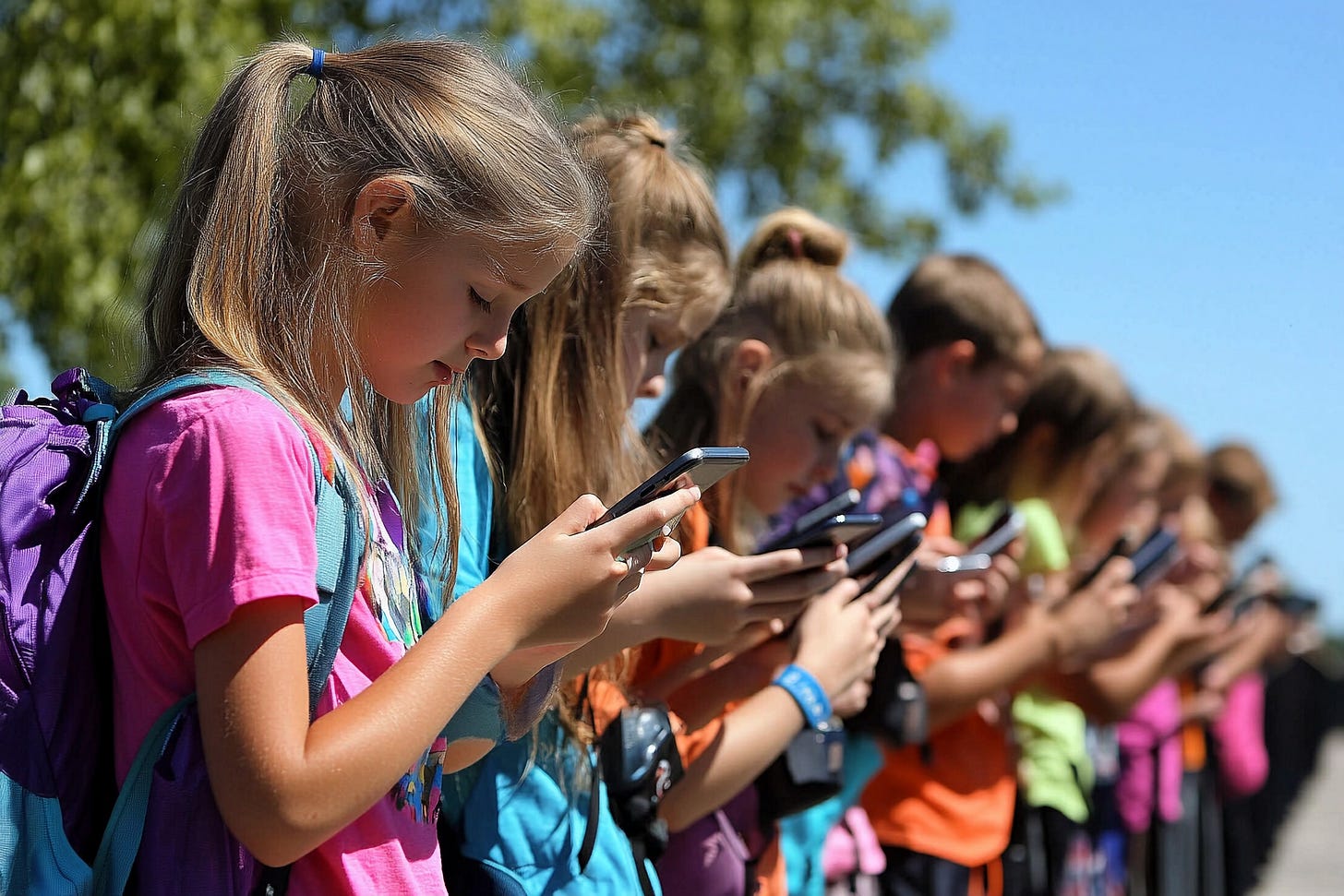There is something on my phone
where did my attention go?
I remember when it happened. When I knew something had shifted. It was a day just like any other, a summer morning near Washington Square in New York City. The year was 2008.
I was attending a leadership conference in one of the large halls of New York University. We were on break, and a group of us walked out of the building onto Waverly Place. I was looking forward to a conversation with my colleagues about the program so far. But when we hit the street, an odd thing happened.
Everyone pulled out their smartphone.
I remember thinking, “Oh. Ok. We’re all doing this now.” I may even have said it outloud, I don’t know. I was confused and a little disappointed. Walking out of a meeting or a class and talking to people was something I and everyone I knew had done for decades. And in a dazed moment on a sidewalk in New York, with my Motorola flip phone in my pocket, I was alone. (Don’t worry — by the end of the summer I would have the iPhone 3G).
Suddenly, it seemed, people had somewhere else they could be. Mindfulness practitioners talk about the value of “being present” and “living in the moment.” Well, guess what? Now there is a portable alternative to any given moment. A world within the world. And it arguably started with the 2007 iPhone with web connectivity and an app ecosystem. No one has to “Be Here Now” anymore.
A few years later I was facilitating a workshop on leadership and management to a group of 20 supervisors at a federal agency. It was an interactive program where I set up a task, they would break into groups to work on the issue, then all of us would debrief. During the debrief, I was asked a question by one of the participants. As I was answering his question, he started looking at his phone. I paused for a beat, just to see if he would come back online, but he never did.
By 2012 I was seeing more and more of this behavior. I came up with the concept of “Dipping, Diving and Disappearing” as three levels of smartphone engagement during interactive workshops that I would facilitate:
Dipping. Quickly checking the screen, then returning to the conversation, such as when the phone vibrates and you want to see the nature of the communication but take no further action. 3-5 seconds.
Diving. A more in-depth exploration of the smartphone content, such as scrolling through email to see if someone needs something, and perhaps texting a reply. 1-3 minutes.
Disappearing. Characterized by mentally checking out of the group altogether and entering fully into the content of the smartphone, to the extent that you are unaware of your name being called, or indeed if the meeting hasn’t already adjourned. Usually 5 minutes or more.
My suggestion was that if at any point more than a third of the workshop participants disappeared, I would call for a reset to get everyone back in the actual room.
Typing this, the tactic seems quaint, and I’m feeling naive and a little foolish that I couldn’t hear the voice of the inevitable future: “You have no idea what’s coming next.”
A young couple sits at their table in a quiet restaurant. There is a brief exchange of words, then they both pull out their phones. Ten minutes pass with no interaction. I doubt they are texting each other.
A young boy on the soccer field is practicing taking shots into the goal. He runs, kicks, and the ball sinks into the net. On his walk to the net to retrieve the ball and the walk back to set the ball for another kick, he is on his phone. This happens over and over.
On a suburban street, a woman is walking her dog. The leash is on her left wrist, and she is pushing a stroller with her left hand. With her right hand she is holding her phone and swiping up with her thumb, studying something. I watch as she approaches. The child in the stroller is awake and looking around, taking in the day. I watch as they pass by, each quietly and totally in their own worlds.
To help understand what’s going on, I learned about the two types of vision: foveal and peripheral. They are processed differently in the retina and in the brain. Foveal vision refers to a few degrees in the center of the visual field. Peripheral vision covers the outer parts of the visual field.
Foveal vision is associated with object recognition, decision-making and goal-directed action. It is tied to the part of the brain that helps coordinate hand/eye movements.
Peripheral vision is used for spatial orientation and for detecting motion. It allows for fast, often unconscious, threat detection and for cueing up an appropriate response. Tied to the amygdala, it is evidently part of the early brain when we needed to scan the environment in order to survive and to assess friend or foe. We might not use it nowadays to scan for tigers, but it helps us figure out what else is going on around us that might call for our attention.
This might be a leap, but I can not help thinking that any kind of screen time exercises and develops only that part of the brain that processes foveal vision. Words and images focus our attention in preparation for the next two instantaneous tasks: deciding and taking action. Deciding: Do I like this video? Yes, hilarious. How about the next one? Nah. Next one. Does this move help me get to the next level? Yes, awesome. What’s next? I want that. Taking action: Click here, purchase, like, forward, comment, go, jump, fight, drive, this way, scroll, etc.
One second my outrage is provoked by a news story. The next second I get a dopamine rush from a message I have been waiting for. A pundit articulates a view that reinforces my worldview and I feel righteous and smart. Oh, but check out this comedian - He Cracks. Me. Up. Every time. I bounce back and forth between the simple states of outrage and dopamine rush over and over and when I look up the sun has set.
Tech figured out early on how to grab and keep our attention, to keep us looking at the screen.
Meanwhile, is our ability to chill compromised? To just sit back and look around? Is that part of the brain atrophying?
I heard a guest speaker at a conference on adult learning talk about the possible effect of screen use in the overdevelopment of the part of the brain that processes foveal vision, and the corresponding underdevelopment of peripheral. I’ll never forget his audacious warning:
We are in the middle of the biggest unintentional neurological experiment in the history of humankind.
I can’t remember his name. Hang on, I’ll google it. Nope. Nothing there. Hang on…
Notes
Be Here Now is a 1971 book on spirituality, yoga, and meditation by the American yogi and spiritual teacher Ram Dass.






Great piece, Stew. While I appreciate the humor you've woven into it, I recognize that the topic is quite serious. Of my two children, the older is unique in that she spent her childhood without high-speed internet. Neither got cell phones before they were 13, and smartphones didn't exist at the time, so that came later still. I held off myself in part because we lacked cell reception during our years on the farm, but I knew as soon as I switched over, I would have trouble regulating my use of it. That has definitely proven true. And I laugh about having adult onset ADD. 😩
Thank you for teaching me about foveal vision. I wonder if that's what explains how the 5 month old in my other daughter's care focuses so intently on the screen (ie: my face) when we FaceTime. I've remarked on it numerous times. You'd think the baby would be too young for that kind of focused attention, but I witness it with frequency. Scary!
Have you watched Social Dilemma?